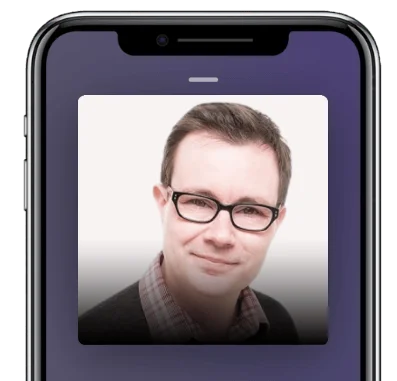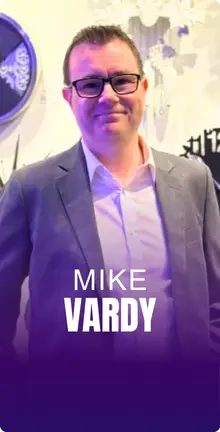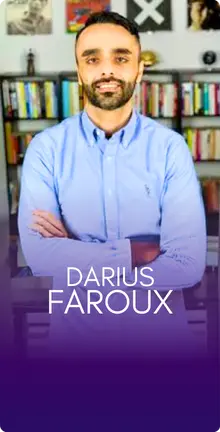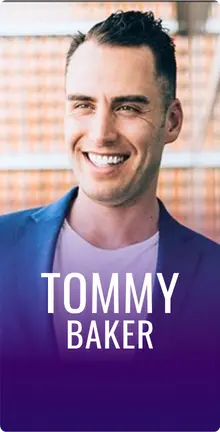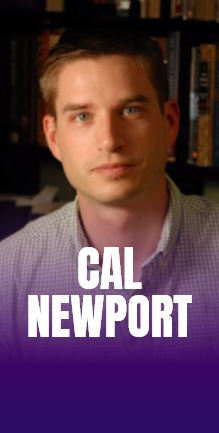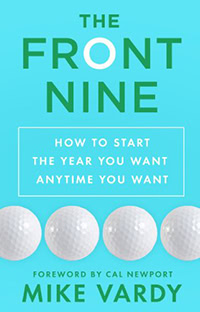
Welcome, Mike! It is great to have you.
Thanks for having me Stephan, I really appreciate it!
So how is it in Victoria, British Colombia right now? Is it a beautiful day?
It’s not as gray as it normally gets. In May, we rarely see the sun. We actually saw the sun peek out a little bit this morning, but it is cold for us. And this is interesting because people think “Oh, it’s Canada, there’s snow and all that”. Victoria doesn’t get snow. We get it once a year maybe. And it rarely drops to freezing temperatures here. But when the sun comes out, it gets colder. So it is nice to see the sun, but by the same token, even though I was born in Toronto where I should be used to this kind of weather, I’ve been over here for about 15 years now, and my body doesn’t like the cold. I’d much rather be where you are.
Alright, so let’s talk about productivity and how it has impacted your life. I presume there’s a time when you weren’t as productive, and you just went down this rabbit warren, started exploring all the tools, techniques, strategies, and so forth? What was your story of going from where you were to a productivity expert?
I think for me what it was is that when I started moving up the ranks at Costco, I worked for Costco for almost 12 years, and when I moved out west from Ontario I worked at a warehouse in a small little city called Burlington, Ontario. Actually it is where Jim Carrey, the actor and comedian, is from. And I ended up moving to Port Coquitlam, British Colombia, just outside of Vancouver, and then was only there about three months and then got promoted to a manager at the Victoria Costco. And what they did was I thought I was going to be the manager of this one department, I worked at the concession area where the hot dog and pop special is. I’m sure you’ve gone into a Costco at least once where the hot dog and pop special is for $1.99. That was my lineup.
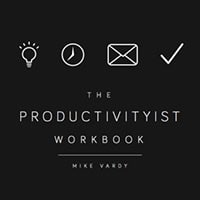
But what they did is they said, “We’re also going to put you in charge of the deli area, which is where the rotisserie chickens were made”. I looked at it and thought “these are two different types of departments”. The food court is all about “service now”. There’s no advanced planning in terms of merchandising, it was all about service. Whereas the service deli was all about prepping food in advance and making sure there was a product out there well in advance for when the warehouse opened. One was directly engaging with the customer, and the other one was not, you were behind a glass-windowed area. And interestingly enough, the food court was very hot with pizza ovens and that stuff, and one was very cold. So these were very different areas. I knew to manage both of these departments, which are also at the opposite ends of the warehouse, I would A, need a very good pair of shoes to walk back and forth repeatedly, but I’d also need some really good tactics to manage all of this stuff. That’s when I started to dive into some of these productivity methodologies that really kind of were at the forefront at the time. So at that time, Getting Things Done hadn’t come out yet, but Kovy’s stuff was out there.
As was Tony Robbins’ Time of Your Life program. So I was really looking at this stuff because I knew I wanted to make sure both departments were successful, and they were so richly different that I had to have a way to segment them out. The genesis of what I use now, which is called “Now Your Way”, I started planting those seeds back then. The use of color in my planner. The use of mode-based work. The idea of capturing was already kind of engrained, but I was using paper, I was using a paper planner. There were no mobile devices. We had Intranet, not Internet, at Costco. That’s kind of where it started. In time, I went from working in two departments to one. I made both departments profitable, went down to 1. And eventually what happened was I started to look at outside interests. My roommate at the time said, “You should try comedy”. And I had done that before, I did theatre in high school and music theatre and all that stuff. I went to take an improv class in Victoria, an improv rehearsal, and I was hooked again. I was right back into the creative zone. And that is what I wanted to do. I wanted to be an actor, comedian, performer, but you know, Costco the only performing I got to do there was putting a brave face on when I was having a bad day.
So I started to apply the principles to that. How do I manage this department and also manage my burgeoning comedy career? And that kind of travel with me. I worked my way down instead of up, eventually and so I started down. By the time I left Costco I was a door greeter, at the front door, and applying most of my time management techniques on my wife and young daughter, at the time. My wife and I would have been married for about 2 years, my daughter was very young. I started to really apply it there. It started being with me throughout. At that time Getting Things Done was out so I started to study, I started studying his methodology. Slowly but surely, I worked my way from becoming a productivity enthusiast, who used the tools, to a productivity specialist, who was able to tell people how to use the tools, to what I am now. This goes back to the Tony Robbins thing. He called himself a “life strategist” when interviewed by Marie Forleo, I thought, that’s what I am. I’m a productivity strategist. I know the stuff, I’m passionate about it, but now I have my own strategies I can teach people, and it has been helping people. So, that is kind of what led me to where I am now. The cool thing is I get to perform on a stage, which is what I really wanted to do as a kid growing up. But instead of scraping by as a standup or a sketch comedian or an improviser, I actually get to work from my office at home and be around my son and my daughter and my wife. It’s a pretty charmed life. I have to say if it weren’t for the frameworks and what I studied, I wouldn’t be where I am today.
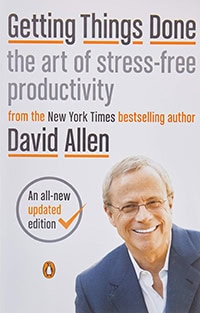
So let’s juxtapose the frameworks and systems out there. There is Getting Things Done by David Allen, there’s RPM, Rapid Planning Method, by Tony Robbins, part of the Time of Your Life –
Which used to be called Opa, that’s what he called it before-
Oh really.
And I thought RPM makes way more sense than Opa.
Yep. And there’s the Pomodoro technique. There’s Now Your Way, which I’m not familiar with, I’d love to hear more about that.
The Covey Matrix, all that.
Right, so Stephen Covey talked about sharpening the saw, the four quadrants, urgent and important, urgent but not important, not urgent not important, and so forth, so where you spend your time. All that great stuff that really defines how you structure your life, not just your day. So let’s kind of juxtapose those. What are your favorites? What are the things you pull from different methodologies and incorporate it into your life?
I think that is where Now Your Way kind of came from. Now Your Way is my own creation. Now stands for the deal with the things that you need to do, decide on the things that you ought to do or ought not to do, and then do more of what you really want to do. And that was born from studying all these different methodologies and figuring out what worked. For me, productivity has become this thing that is very impersonal. Back when I started studying it, it was very personal. Everyone has their own way to do the work that needed to get done. Projects are very objective, like you need to get this thing done, but how you tackle it is very subjective. I really like aspects of all of these methodologies. The getting things done methodology, what I like is capturing, which is huge. And then also the idea of context. The problem of context is that many people can’t wrap their heads around it. It’s like context?
I don’t understand what that means. A lot of people end up working by project instead. And there are a lot of complexities which can turn into complications with the GTD methodology, it can be a buried entry. The Covey Matrix is initially co-opted from the Eisenhower Matrix, how Eisenhower used to plan out how he was going to tackle his day or make a decision. There are some aspects that I really like because it is not focusing on what is next on the list in a chronological way, but it allows you to really look at what’s important? How can I make sure it doesn’t become urgent and important. How do I put my best effort forward to make sure this important stuff, such as writing a book, or delivering on a deadline, how can I put forth my best effort before it becomes an incident where “Now I have to get it done and I won’t be able to deliver it in the quality that I’d like to have because I’m now focused on getting this done as quickly as possible.” The Pomodoro technique, I do love the idea of how it marries task and time in a way that still allows you to focus on the task at hand, and the time at hand becomes secondary.
I like the 25-minute idea where you say – because we can really only focus on anything for 25 minutes. We can get in a state of flow, but we have being able to say “Okay, I’m going to focus on this for 25 minutes and then move onto the next thing”. A very different thing. I like that structure as well. Especially for me, I like to use it on things I don’t like doing. Like scanning receipts for tax purposes or putting information into spreadsheets, or even dealing with email. So that tool is really effective. And then RPM, what I liked about RPM, which I’ve started to incorporate in some of the Now Your stuff, is the larger broader version. Getting Things Done does this as well, but I love the life plan stuff incorporated that Robbins has incorporated in there and visions of roles. The personal life, the professional life. There are things I don’t like about it like hyper-scheduling. Like scheduling sleep. Robbins would schedule sleep from 12 – 5. I don’t like to have that kind of rigidity, so there are elements of all of this that I’ve put into their own system. I think everyone does this to a degree when they start studying this stuff. I’m sure, Stephan, that you use some of these methodologies as well. And even GTD purists, you say “Hey, did you do your weekly review this week?”, they kind of bow their head in shame a little bit.

I know that feeling. Absolutely.
So I do aspects of all of them. I think for a lot of people what they need to do – we need to put ourselves in a position where you have the ability to kind of look at what you’ve got on your list and deal with those things so you can get them out of the way. So you can say these are done, now let’s see what else is left. Now there are these things that maybe I should do, but maybe I should delegate to somebody else. Or maybe this is past its prime and no longer aligns with my values. I use theming a lot in Now Your Way. So maybe this doesn’t allow for the theme for this month or this year or this day. But then you sort of sift through the crop of what needs to get done. And I use need instead of “have to”. It’s intrinsic, it’s “I need to go to work today”. Why? To pay the bills and have the lifestyle I want. But if you say “I have to go to work today”. It’s automatically got a negative connotation. This -ugh. You go in with it is because someone else is forcing me to. I’m doing this because it is going to lead to better things.
Even the to-do list idea. It has a negative connotation. I like to flip it around and call it a get to-do list. You’re in control of deciding how to focus your time and energy.
Absolutely, and that’s why when people say “How do you deal with email?” I say “as little as possible”, because it is other people’s agenda. I will go into it and read emails but I don’t like to live in email because it is this constant stimulus from outside sources, where I need to focus on my agenda. If people realize that if you work in an organization where you get a lot of emails, what happens is it pulls you out of the reason you are there, to do the work that the organization deems necessary. The email is to feed you information that you can then apply. A lot of people what they’ll do is that they’ll wait for that information to arrive. It is very Pavlovian. The little bits of dopamine, the rush you get, when replying to an email or opening an email, or getting to inbox zero state which is again a term that has kind of been corrupted over the years. That mentally is prevalent because it is something you can quantify. I had 310 emails today. How many do you have now? I have zero. Well, did you work on your book? No, because I had 310 emails today.
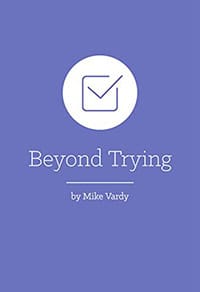
It’s like putting the little pebbles into your pail first and then trying to add the big boulders after that. Oh, there’s no room.
I think what people want is something that’s simple, flexible, and durable. And I mean, no app will help you with this on its own either. That’s what I come across a lot. I’m sure you come to this too. The tool is the thing that is going to solve the problem. Well, garbage in, garbage out. The tool will take you so far. The app – Evernote is a great example. I’ve got a lot of people saying “I love Evernote, I use it for everything”. That’s great. They put everything in there. So their paper mess is clean, but then they go into Evernote and that inbox is a mess. Or they figure “I don’t understand why I’m not getting more done because I’m using this task management application. The tool must be the problem”. The tool isn’t the problem, it’s the approach. We need to put the personal back into productivity because when business isn’t personal, productivity definitely is.
It’s like the tail wagging the dog. If you’re using the tools and the particular structures dictate how you live your life instead of you make decisions about what your future looks like. Paint that compelling picture of your future in your mind, and work towards getting that. A lot of the time, you’re going to spend big chunks of your time in the important but not urgent column, working on your own priorities and setting aside everybody else’s, not dealing with emails, and so forth.
I think that the other thing is too is once you start really studying these systems, that’s when you can really optimize them. You can’t optimize without understanding it first, right? Really getting into engraining it in your – that is why rituals are so great.
There’s an expression “Adopt before you adapt”.
Absolutely. And most people try to do it backward. And I think it is part of all of the information that is coming out of this nowadays. Clay Johnson wrote this great book called The Information Diet. He doesn’t talk about eliminating all information, but it is about eliminating unnecessary noise from the equation and then deciding when to take in that noise. I’m a guy who will go in and check my email after I do my first big important task of the day. If I can get all three of my absolutes, I call them, which is a take on my three big rocks, or MITs, or whatever you call them. But if I get all my absolutes done, and then I go into email, I can spend a half-hour or an hour with people answering email because I’ve already done my three things for the day that I needed and wanted to get done. But what a lot of people do is they open email first thing or they Facebook or social media or whatever.
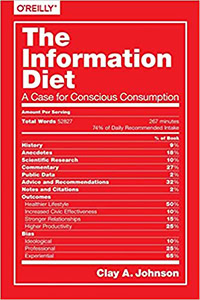
And then they get pulled into this abyss of diversion that they have difficulty getting out of. And that is one of the things that I like about GTD and what I’ve adapted into my own Now Your Way, this idea of a mode-based thing. GTD talks about context. I use modes because modes are something people can understand. Oh, I’m in beast mode, or I’m in airplane mode. Airplane mode is a great example of a state, and that’s really what modes are. So what can I and what can’t I do in this position? If I’m in airplane mode, which is slowly going away unfortunately for some people is “I know I can’t be connected, I know I can’t check email, I can’t make phone calls. What can I do? That means I can work on this report, that means I can finish this, I can read this book. You can do all these things because you’re in airplane mode, is I can have a list, of work I can do that says “What are all the things I can do when I’m in airplane mode?” I can segment my list that way, which gets me into that state of flow. Especially in email mode, when I get an email, I’ll look at it and say “Okay, is this information, is this actionable, or is this both”. And if it’s both, it’ll go both in my task management application, and it’ll go into Evernote because it’s information I’ll want to recall later. If I can’t deal with it at that time, I just archive the email. I don’t need to look at it anymore. If it is something I can do at that time, and it warrants a quick response, I can definitely do that.
But the thing is, what a lot of people will do, and I’m sure you see this as well, is that they’ll see an email, and they’ll go “I don’t know what to do with this yet, so I’m going to leave it in my inbox”. The problem there is that the inbox is a big Pandora’s box of mystery. Every time you open it up, you don’t know what it is, and when I worked at Costco, it’d be like putting everything in the receiving department and not putting it on the shelves. You have to go through and root through to find the toilet paper you want to buy, and hopefully, you’ll find it. The problem with the way we treat this kind of information is that we don’t give our brain clues to find where this stuff is. If you leave everything in your inbox, it is basically telling your brain, I don’t know what’s in here, we are going back through it to figure it out. And one of the big rules, of course, is to touch it once. Look at it, deal with it, put it where it needs to go. We certainly wouldn’t do that with our physical mailbox. I’m sure your physical mailbox isn’t filled with mail you didn’t want to deal with. Or didn’t know what to do with. Because you have an overflowing mailbox, and your postal delivery person wouldn’t want to deliver mail to you anymore. We start treating email like that and everything a little bit like “How can I get this where it needs to be” and you have a better chance to deal with it instead of wearing it out and wearing out our energy searching. We end up executing instead of exploring unnecessarily.
It’s like – I love that, touch it once, instead of your inbox being a catchall. I follow that same principle, I have a team of virtual assistants who manage my inbox, keep it at inbox zero. I apply GTD into my life, so I apply GTD into my email structure and I have an action folder, I have a read/review folder, I have a waiting for the folder, I have archives, and stuff I don’t ever need to see goes into my archives, that is a decision made by my highly trained virtual assistant. Things that I have to action goes into my action folder. Things that are just an FYI, I don’t need to take action on, goes into read/review folder. Most things that go through my inbox go straight into my archives and I never even see them.
Yeah, and that’s important. A lot of people, what they’ll do – I like foldered structures when they are that simple. That’s a simple way to do it. A lot of people, what they’ll do is create folders for specific projects. There are forty email folders. The problem there is that it is a two-way street. Email is a two-way communication device. It is like being on the phone all day. The chance that you are sifting through these large amount of folders, the chance that an email coming in and you getting roped in, is higher. But I do the same thing, I’ve got a series of – my email is generally moved to where it needs to go. Like either again Evernote or to my task app or both. But in your case, your brain is trained not to go to the inbox but the different folders because your brain goes “Okay, this requires action, this requires review”. That’s all your brain does. Once you train your brain to do this stuff, and it takes a while, you can be more productive, but most people don’t take the time to do it. That is one of the unfortunate realities of what I’m trying to do and help people with.
Train your brain. It is not designed to be a warehouse, it is designed to be a factory.
Train your brain. Your brain can’t remember all this stuff. It is not designed to be a warehouse, it is designed to be a factory. So let it. Say I don’t go into my inbox, I go into my action folder. What do I want to do right now? Oh, I’m going to read/review? Let me go into my read/review in my email so I can see what needs to be read and what needs to be reviewed. And then if it requires action, that’s the next step to it. That’s a really great way to go about doing it, Stephan, because a lot of people, they don’t. And you’ve got virtual assistants to help you, which is great. And VAs are wonderful, but again you have to take the time to train them and let them know what your expectations are. And a lot of people, that is a buried entry for them too. It is not that difficult to do, but you have to make it important, you have to make it a priority.
Yep, and what I do is a when I train a virtual assistant, I record it so I have materials for when –
You future-proof it.
Right.
Same, I have a shared notebook in my Evernote called “Best Practices”, for all my staff. I have an actual assistant who lives in my Victoria that meets with me once a week, she’s like the head, my operations assistant. And we are using FancyHands for smaller things right now, it is very impersonal, but there are other tools out there like EAHelp, Effasis. Who do you use?
I have virtual assistants that I found through Craigslist, I can explain the whole process in a minute. But for small tasks like just assembling furniture or something like that, I’d just use TaskRabbit.
TaskRabbit. There’s supertask, there are a lot of options out there, and they are not that expensive. You know virtual staff finder, Chris Ducker, the founder of virtual staff finder, he pairs you up with a dedicated assistant if that is what you want. But there are a lot of different ways to do it. You just have to say “Okay, I’m going to focus on this.” Because again, the payoffs are huge. We just developed a product of productivity, it’s called “Meeting Makeover”. It’s – meetings are a huge time-waster for people. And we built this product in a fairly short period of time, but what we recognize during the research is that there are 25 million meetings held every day. In the United States of America, the executives that attend those meetings, out of 100, 67% of them say that the meeting was not productive. What those values translate into is how do you make those meetings more productive? The same thing can apply to email, the same thing can apply to all these other things. I’ll give you a cold hard example of finding the time.
In the United States of America, 67 out of 100 executives that attend meetings say that the meeting was not productive.
Recently I went through my PVR queue because if you like to watch TV, and I occasionally like to watch tv, you’ll eventually find more things to add to the PVR queue because it is so easy to do. Well I went and looked and I had the Daily Show on there, and the Colbert Report, and a bunch of other shows, and even old LaVerne and Shirleys because I missed them back in the 70s. And what happened was I was reading some material – I think it was about Gary Vaynerchuk. I don’t watch a lot of TV, but I had a lot available to me. So if it presented some friction because I wanted to do some writing or something. So if I’m eating lunch, because I work from home, and I say “Oh, I’ll just turn on the TV and I’ll see what is on.” I go straight to the recordings, because that is one way to save time is to have things already recorded, so you have an idea of what you might want to watch. But the problem would be is I’d eat lunch, and an hour later I’m still watching. I could have eaten lunch in half an hour if I had really wanted to. And then maybe read for half an hour afterward. What I did was count how many hours per week I had recorded television. And I said, okay, there were 22 hours of recorded television. Actually, that is not a lot. You break it down, people watch the news, they’ll watch the late-night comedies, they’ll watch the late-night dramas, because there are hardly sitcoms anymore, they are mostly late-night programs, and it was a reality show, by the way, I’ll be very clear.
I think that the average American watches five or six hours of TV a day.
That averages out to about 42 hours. So I was below the average. I looked at everything I watched, and said if I stopped watching this, is this going to be something I’d miss? I’m now down to seven. I knocked it down to seven. I watch the superhero shows I like to watch with my family, and the Bengals football games because I’m a Cincinnati Bengals fan. I’m down to 7 hours. That’s 15 hours of found time. That is 60 hours a month on average. Let me do the math really quickly. That’s 780 hours a year. That’s what people can wrap their heads around. They go wow, that is a lot of time. And with those 780 hours, what could I do. Could I get more sleep, could I exercise?
That’s the interesting thing when you look at adding a virtual assistant to the mix, that ought to do stuff, the stuff we often get stuck in, because we’ve got these decisions, and decisions wear down on us. If we can get those out of the way, and almost create obstacles that create these boundaries, then we can protect our time. It is currency. But unlike money, we can’t earn it back. So for me, it felt so good to knock it down to 7 hours a week. And now I’ve got the capability to say “Okay, now what am I going to do with this other time?” I’m going to plan to have an assistant do more stuff. I’m going to do some research on some Fiverr gigs that I might want people to build better pdfs for me. Things like that. But that is all you need to do.
Protect your time. It is a currency. But unlike money, you can’t earn it back.
I challenge all Get Yourself Optimized listeners. If you look at your TV schedule, and say “You know what, these things I either don’t need to watch, or I can catch up on the highlights on social media”. We’ve seen them! The John Oliver five minute bits versus watching the full hour. You can do that and make a decision “Are these things going to get me where I want to go? You’ll find you’ll cut a lot of this stuff out. Then eliminate the option. I learned a lot of this from Tony Robbins. The word decide means “to cut off” all other options. It’s Latin. And that is what I did. And if you can do that, the impact you can have with that additional time and focus on additional tasks is huge. You can spend time focusing on email. You can set up a system or framework that will foster a framework. Optimization, for me, like you said, adopt before you adapt, but these are the kind of things you can do to free up more time so you can truly have more of what you want in life.
I love that. Eliminating the option. For me, I’m an abstainer. There are two types, I’m an abstainer, I just have to cut it out. Because having the cookie jar there is just too much of a temptation.
You’re an addictive personality, right?
Yeah.
For me, I’m the same. Do you know who Maneesh Sethi? He created a thing called Pavlok. This is going to sound very masochistic. But what he created, it is this bracelet. It emits – it is voluntary, you have to do it manually, but if you find yourself doing something you don’t want to do, it shocks you. A low-level shock. It is aversion therapy. I started doing this when I would go to grab a pop. I have a soda stream, right? I also just have fresh lemons that I cut up as well. If I felt I was going to open a cabinet door to grab syrup, I would shock myself. Takes 5 days, I don’t even want to touch – what’s funny is I go to the cabinet now and go “Oh, I don’t want to do that”. Experimenting with it, it is called biohacking, a lot of this stuff is biohacking stuff. I’m an addictive personality too, I like watching the Bengals play football. But I also like watching football in general. On Sunday, the whole day is literally devoted to football. I could sit down the whole day and watch football.
But what I’ve done is that if I catch myself after the game getting ready to change the channel, I did this last Sunday, I shock myself. Sometimes – experimenting, but having that ability to just cut all that other stuff out, sometimes it takes more willpower than you have. So you have to cut out, you have to eliminate, and throw away all the stuff in your cupboard and throw out all the cereal that has sugar in it. Get rid of the beer in the fridge so you only have it when you go to restaurants so you just don’t have beer in the fridge. Whatever it is you are going to do, it is important to be – productivity boils down to awareness, that is really where it starts. If you are aware of these things, and you eliminate or advocate, depending on what it is, you are going to be in a much better position going forward.
Productivity boils down to awareness.
Right, so years ago, I said no more TV, I’m done. I’ve cut it off. I don’t have cable, I don’t have satellite, I have Netflix, but I specifically avoid binge-watching all these sorts of TV shows. It is so addicting, and it just sucks the time out of your life. People tend to live in short term gratification, that is why they eat junk food, that is why they binge-watch on Netflix and so forth. They look back over the years of their lives and say “What did I do? I just kind of blew it.”
Well, you know what? At least I watched all of Gossip Girl, there’s that. Do you have kids?
I do, they are grown. Years ago, when they were little, I would come home and see them lined up on the couch like little vegetables, and I would say “Hello, dad’s home!” and they would look right through me. I’d say “Okay, I’m going to make this problem go away”. I just gently unscrewed the cable from the wall, just enough so the connection wasn’t there, but it still looked plugged in and so they’d turn on the TV and it’d be snow instead of the TV shows and I’d say “I don’t know what is wrong, sorry!”. And it never came back, so they just got off the drug and started playing outside and playing with each other and it was so good.
And we didn’t have cable up until – I was the one who brought it back because I wanted to watch sports. Live sports. And I didn’t want to go to the bar to watch it. Because that would cost money. And I thought, well, we can just have it here. But you know how cable packages work. You can’t just get one channel, you have to buy the whole thing. What we did was set up parental controls, which is something people don’ t generally do. Or the sleep timer. Or these – even back when we were kids, there was a sleep timer, you could set it for 30, 60, 90. We set sleep timers on the TV. If the kids want to watch the show – I work from home so it is a lot easier – we set the timer to 30 and they get to watch one show and that is it. Because my kids are younger, I have a five-year-old and a seven-year-old. We live in a world where on-demand is so easy.
We were traveling to San Diego for a conference and the whole family was with me. He goes, “Well, I want to watch this show.” I say “Well, you can’t just watch this show”. They are like “What? How come?” Yes, because we have a thing that records it. He didn’t know what to do. It was actually a good problem to have because there was nothing on that he wanted to watch and he didn’t just sit there and surf like other kids would have done back in the day. He didn’t know what a commercial was either, which was interesting. If you can’t cut the cord completely, set up parameters that allow you to keep it in check so it doesn’t become a problem. I mean, I love the parents that with their teenage kids, at the beginning of the day, they’ll change the wifi password and say “In order to get today’s wifi password, you need to empty the dishwasher. Fold your laundry, clean your room. Once you’ve done all that, you’ll get the wifi password for the day. That’s phenomenal, it is absolutely genius. My daughter has a little iPod, and we’re not doing that yet, but I’m quite capable of doing that. I work online and I have access to being able to do it. They know I’ll have the wifi password. You need to just think outside the box a little bit, and what you did was thinking outside the box. Because you – what you did was eliminate the furor and say “I’m going to cut cable and that’s it!” you just said “I’m just going to subversively do this” and the results were positive.
If you can’t cut the cord completely, set up parameters that allow you to keep it in check so it doesn’t become a problem. Share on XI hope my kids aren’t listening to this.
They are like “you knew all along!” It is definitely interesting, and we live in a society and an age. This is not new, the instant gratification of the lizard brain presenting itself (like Seth Godin will call it) constantly. We are always at a war with ourselves being like “Well you should, but you could also you know eat that cupcake.” Yeah, but the bike is right there. I looked in the mirror and said eating that cupcake takes way less effort than getting on that bike. “You know what, you’re right, I’m tired, I worked all day and I deserve it”. You always create these barriers and frameworks that foster freedom. You can say – and that is why I love mode-based work – people say, “I can’t move forward with this project”, and that is one of the problems with most to-do lists is that they are project-based.
If you are waiting on someone and you can’t move that thing forward, then your brain goes, well now what do I do? And that brain goes, “Oh, you don’t know what to do? How about you watch TV? How about you go have a beer? You can go “I don’t know what to do right now, but the theme of the day is writing, so let me go look at what writing tasks I have”. Your brain goes, “wait, we want to do other things”, and you go, “hold on, brain, the bad part of my brain. Today is a writing day and I have 5 writing tasks I can do”. “Oh, but you’ve got low energy”. “Yes, but this is a low -energy writing task, so I can do that”. “Oh, but you only have 25 minutes.” “But I’ve assigned a 25-minute mode to this, so I can do this, so go away bad brain. You’ve lost this argument”. The brilliant part about this is that it is yours, it is durable. I’m sure you’ve come across this too.
The bad part of your brain, the part that keeps you from doing this stuff, it also gets stronger the more you present plausible frameworks to stop it. It’ll really try to prevent you from doing the thing you really want to do over the long term. It tries to come up with new creative ways to stop you, so you have to consistently have a framework in place that combats that on a broad scale. If one part of your brain says “It is time to focus” and another part says “you only have 5 minutes between these two meetings” “well, here are the list of 5 minute tasks I could do”, “Oh, but you have low energy”, “well, here are the four of those five minute tasks that are for low energy. So what is your next argument?” “Oh, it’s uh –” That is exactly what happens – that part of the brain loses the argument. If you have mode-based work as an ally, when you need it is there. I need to dive into this specific project, it is there. Great. Oh, I need to work on schedule because I am in this state of urgency.
MAPS – M for mode, A for action, P for project, S for schedule
Okay, well if you look at the daily map, which is part of Now Your Way, there is a mode, there is action. M for mode, A for action, P for project, S for schedule. The MAPS. If you need to work by schedule, you just look at that column and go “Okay, well I need to work by priority, these are the things I need to work on” or “I need to get these things done in the morning and these in the afternoon”. Okay, but what about mode? Well, do you need to work in general mode? Depending on what department you’re in. Maybe what role you have? Do you need to work by resource? Okay, Microsoft Word, well look at all the things you can do with Microsoft Word right now. What about the energy level? Are you feeling sick? If you are feeling less than 100% when you go into the office, how many times do people call in sick because they don’t feel 100%, imagine going in, being exhausted, or working from home, being able to look at all the low-energy tasks you have left, and knocking out 5 or 6, 7, 10, 12 of them and feeling productive?
Energy-based modes are great. And then the A, activity-based modes, think okay well writing mode, study mode, reading mode. Like you have read/review, that is a reading mode. Researching mode. All that stuff. And then the t, time-based. I have 5 minutes. I have 15 minutes. This is going to take me an hour. I assign those. Time-based modes you want to keep at a minimum, maybe 3 -5 of them. But if you work by mode, you can do great work, there is no secret why the acronym of what I’ve said is great. You can do great work consistently, so what you’ve done is presented the part of your brain that doesn’t want to do the hard work, the deep work, and doesn’t want to do it consistently, you’ve given it no leg to stand on. But it takes time, it takes practice.
Yeah. We are just creatures of habit, and if we gravitate towards the TV or going to get a snack and figuring out what the next thing to do is, we are screwed, essentially.
And we live by mode anyway, if you go grocery shopping, you are not going to go there with a meal plan for the week and shop by day of the week, you’d look insane. If you have got chicken on Monday, steak on Tuesday, and pork on Wednesday, you are going to go the meat department and pick up all three at once. You’re not going to go “On Monday, we are having chicken and broccoli and dinner rolls and go to each department and go to the front of the store and say “Oh, well Tuesday we are having steak and broccoli and garlic bread”. And then – you’re going to categorize these things so the amount of friction you deal with when getting these things is minimal. We live by mode, we don’t live by project, we live by mode. Why not work that way?
You know, that is so logical, but people will still have problems with this if they don’t address their mindset. If they haven’t made that shift in identity. Because as Tony Robbins says, “There’s nothing more powerful than our desire to be consistent with our identity, how we see ourselves.” If we see ourselves as not as productive as we could be or a procrastinator. We are going to sabotage ourselves and make it real, that concept.
There’s nothing more powerful than our desire to be consistent with our identity, how we see ourselves. – Tony Robbins
The other thing he talks about is uncertainty and certainty, and that kind of approach allows you to have both uncertainty and certainty because you know these modes you have to set up for yourself and you’re certain there are aspects of it that keep you from pulling yourself away from doing the things you want to do, but there’s uncertainty in that – you’ll look at that mode and say, “What are the 20 things? I don’t know what the 20 things are.” And that design, I only need to remember what mode I’m in and how I’m operating right now. And that is what a lot of people don’t . What they do is they try to trust their brains and make their brains remember everything. Or to remember specifics. A lot of people talk about this, Robbins specifically. Your brain isn’t designed to remember all that stuff. It is only designed to remember little amounts of information that can lead it to bigger amounts of information. So if you know that Wednesday is the day you record your podcast , an audio-video production day, you can wake up Wednesday morning and say “What am I going to do today?” I don’t know, but I know it is an audio-video production day, I know where I am going to look first. As opposed to waking up and going “Well I wonder what the day is going to bring me? ” Because as Jim Roan says “If you don’t run the day, the day is going to run you”.
And our days are factories, not warehouses. So we’ve got to get that stuff out of our heads, these ideas, to-do lists, the grocery lists, and everything and put that into a trusted system like David Allen talks about with GTD. One thing that in my mind, this idea of being more intentional and having it engrained in my mind into my identity not just “I kind of wing it”, or “I’m all about short-term gratification”, is to install these new belief systems using affirmations. I do that every morning. I have affirmations that I just work through until that is just installed and I believe it wholeheartedly. One of my recent affirmations has been “I am intentional in everything I do”. And I’ll tell you what, if you are intentional in everything you do, there is no such thing as downtime, everything becomes intentional. Even let’s say you go to a family reunion. You have an intention of what you are going to achieve, what the outcome is going to be. It’s not that I’m going to work – I’m attracting into my life certain outcomes and with a family reunion it might just be a connection with certain relatives I haven’t been in touch with. I’ve kind of let things slip and didn’t call them very often. So I can re-establish that connection and make them feel loved and needed and all that.
Well when you focus on that and use affirmations, you get to marry attention with intention. Because you won’t necessarily – most people have all the good intentions in the world. I’ve been reading Wayne Dyer’s book, The Power of Intention. The title is misleading because your intention only gets as much power as you give it attention. So in your case, if you are going to a family reunion and your intention is “I want to reconnect with Josie because I haven’t seen her in a long time”. Getting that out of your head and into a place where you don’t have to remember that, you can fulfill that intention a lot easier. How do I set myself up? Whenever you have an intention, you always want to set yourself up. If you are going to the family reunion, you don’t want to be thinking about the twenty emails you have to send, or maybe you put your phone into airplane mode and while I’m in airplane mode, no one can communicate with me.
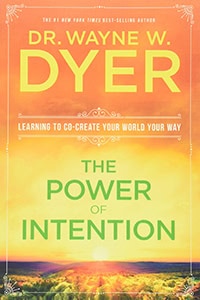
So I’m just going to put it in airplane mode and remove that risk of being disrupted or distracted from the equation. So when you marry, I think productivity, what boils down to it, an intention which is task-based, and attention, with is time-based – when you marry those two together, coupled with obviously the root of it, which is self-awareness. If you couple those two together, you are pretty much unstoppable. Even your downtime, I have no plans between now and then. Great, I have no plans. So, therefore, this gives me the intention, what do I do when I have no plans. I read. It gives you these waypoints. Your brain wants patterns, that is what it wants. When you marry those two things together, you are going to be so much more powerful. Because intention without attention really is powerless, right? Attention without intention is directionless. Many people pay attention to the wrong things. They go off madly into directions they don’t really want to go in and they wonder how they got there.
Yep. So let’s do a bit of a lightning round now because I want to get through so many different topics and we are kind of running short on time here. Let’s start with willpower. Willpower runs out through the course of the day. What would be a quick tip or thought of how to maximize your willpower?
Pay attention to your energy levels. I’m not a morning person, so I’m a night owl. I know that my highest point of creative work is in the late afternoon to evening. My point to reserve my willpower to make sure I do my high-level creative work is I front-end load my day with the minutia, the low-ebb tasks, the administrative tasks, the tasks that don’t take up too much of my energy. Because you’re right, willpower wanes throughout the day, and by the end of the day, if I did all my high energy tasks in the morning, I know the outcome is not going to be as strong because it is not when I’m at my best. So again, take a look at who you are, your body clock. If you want to adjust your body clock to become a morning person, that is totally up to you. I think that honestly is a waste of energy. I think your energy could be better channeled into getting the right outcomes and getting the tasks you really want to make sure are delivered at a high quality. Again the tip is to monitor your energy and act accordingly.
Absolutely. That’s a great tip. I think the thing is to work with your biology, not against it. If you are a night owl or a morning person, work within that framework instead of trying to swim upstream.
If you are a night owl and have trouble getting up in the morning, there’s an app called Sleep Cycle that is available for iOS and I think it is available for Android as well and you put it under your fitted sheet. It gives a time frame between like a half-hour, you can set the differences between time frames of how long you want. What it does is it monitors your sleep patterns by how still you are on the bed. It’ll wake you up based on your absolute lowest levels of sleep. For example, this morning I woke up at 645, that was when I was absolutely supposed to get up by, and it woke me up I think at like 628, and I woke up refreshed because I wasn’t woken up out of deep sleep. So if you are a night person, or even a morning person, but if you are a night person, but if you struggle to get out of bed, that is a tool to use.
I use the Zeo, which –
Which they don’t make anymore.
Right, but mine still works! That one I have to strap on my head and it monitors my sleep.
There’s the Beddit as well. It is a strap that goes on the mattress itself. The circadian rhythms are really really key, and if you can leverage them, you can really make sure – again, you don’t have to go overboard with it, but if you’re aware that you have trouble getting up in the morning or if you don’t want your massive sleep disrupted, these are tools you can use.
Absolutely. Eating the frog. What’s your philosophy on eating the frog, which is a term from Brian Tracy about getting that thing that you are going to procrastinate on but is important out of the way so you can do as much as possible in the day.
As for me, in my three absolutes, I’ll take care of that. Because one of my three absolutes is normally going to be something that isn’t necessarily creative. And my creative work is best done in the evening. When I write down my three absolutes – it’s a silver titanium board. Before I leave my office I write down my three absolutes on that board. And so I will tackle the one that I know is the more administrative task. I know a lot of people are like “well I want to get my writing done”. No, that doesn’t work for me. I know I am better served by doing a coaching call in the morning because the energy I get back from that person just goes back to my stage days, is going to fuel me for later stuff. Often I’ll get an idea for a post out of it. Or something like that. So that is how I equate it. Or I associate it like eating a frog-like a disgusting task because it is administrative. That is how I kind of view it.
Affirmations, do you do affirmations or incantations as Tony Robbins calls them?
The nice thing about morning and evening rituals is that they are stackable habits.
Not really. I used to do the power hour and all that stuff, but I think for me the thing is I make sure my evening rituals and my morning rituals are locked down. For me, the evening ritual, the big thing is journaling. I will write in my journal every night, whether I’m on vacation, whether I’m working, every day of the week, when I wrap up my day, I journal. Because it allows me to course-correct quickly and set me up for the next day. And the end of the day I’m much wiser at the end of the day than I will be first thing in the morning, because first thing in the morning the shininess of Facebook could easily pull me in. But journaling is probably the closest I get. I’ve been thinking about doing meditation, I’ve got headspace. And I’ve been thinking about doing it. I just haven’t put it in to practice yet. The nice thing about morning and evening rituals is that they are stackable habits, right. I can just add them to the mix. I tend to optimize my morning and evening rituals more than anything else these days.
I do the same thing, I incorporate new things into my morning and evening rituals. If I want to start stretching at night, I’ll incorporate that into my evening ritual. If I want to do some meditation exercise in the evening that I’ve only been doing in the morning, I’ll incorporate that.
I think start small. Like add 3 or 4 things. I think what people do is they’ll say I’ve got a great idea for a morning routine, and they’ll add like 10 things. What’ll happen is it’ll be like an hour and a half of morning routine, and that part of your brain doesn’t want to do it will go- you don’t have an hour and a half in the morning, you could sleep in. So start with three or four things, and then add to the stack. Because those 3 or 4 things, you’ll get better at it over time. So you’ll get effective first and efficient second. Then add one or two other things. Or just alter it. In the mornings I used to splash water on my face, just cold water. Now I actually get into a cold shower for about a minute, to just wake up my body and get the juices flowing. So that is a change. But all I did was replace one element of water waking me up to with something a little bit different. Plus what it does is get me out of my pajamas and afterwards I’m going to get dressed. It serves two purposes, right? You’ll learn this over time. Again, adopt then adapt.
And start small, I agree with you wholeheartedly. When I started the morning ritual, I was really resistant for many many years to the morning ritual, I’d do stupid stuff like checking my email first thing, before even having breakfast.
And that is somebody else’s agenda, right off the bat.
Absolutely, it just totally sets the wrong course for your day. So I would start small with like a 5 minute or 7 minute morning ritual where I would just do some affirmations or I would jump on a trampoline, one of those small rebounders, and then I’d optimize the morning ritual over time. But taking five minutes or seven minutes to just do some affirmations and some lymphasizing where you move your lymph around because it doesn’t pump on its own, it uses gravity, whereas your circulatory system is pumped by your heart. So jumping around and really getting your body moving is really important in the morning. So just doing something small and then building over time is – I can’t agree with you more on that one. Let’s talk about flow state, how do you get into that? Because if you are in flow, you can get essentially a week’s worth of work done in less than a day. But people don’t know how to get into flow, or what that feels like for the most part.
Working by mode does is the closest thing you can get to multitasking.
I’d say working by mode is the easiest way. Because what working by mode does is the closest thing you can get to multitasking. So for example if I’m going to go get all the writing tasks that I see need to get done and start writing the one that is either the easiest or the one that I prioritize or whatever. Once we are in that state, you just keep going. Mode-based work to me, again because it is how we live, how we are without even thinking. To me, that is the easiest way to get in a state of the flow. Then the other thing is to have those themes for your day. Every day of the week has a theme for me. By having those, I can easily look at my day and say Monday is writing day, Tuesday is writing day, that is my overarching focus for the day. Wednesday my over-arching focus is audio-video. Thursday my overarching focus is administrative. Friday is creative because sometimes my kids don’t have school so I like to give myself some flexibility. And then Saturday and Sunday are family days. Giving your brain those little pillars can really help because you are giving yourself permission. When you give yourself permission to go into these states of flow, you are by having modes that give you easier access, a better onramp, and you are having themed days that give you a better onramp. And then it is easier to stay there.
Yeah for sure. So you used to do the hour of power to set up your week on Sundays.
The breathing techniques and all that stuff that Tony did to get engaged.
Fire breath and all that. He does it to map out your week. Do you still map out your week even though you don’t do the hour of power?
Absolutely. What I tend to do is before I wrap up my day, I go into my task app, and that is where I grab my three absolutes but also where I look at the next – I have a filter set up on my task app where it used to be three days, but now I see 20 days in advance. And I will look and say, okay, what are my three absolutes not just for today but for the next 10 days. I really get a good sense of what is going on. And by doing journaling every day, that is a huge help too. Because instead of – and we talked about this with the weekly review. Instead of doing the weekly review, I do one bi-weekly. And I call it the rapid review. And the first step of the rapid review is to review those journal entries. If you write in your journal every day, that review process is so much easier because you’ve built this little navigation along the way so you are not looking back as far.
For me, I just read my journal entries since my last review, which is normally about two weeks apart, I assess my inboxes and audit them. I go through them and anything that is in my inbox, I’ll get where it needs to go. Then I process my lists, so anything that maybe didn’t get done, or needs to be moved around, I process those and identify any roadblocks. I look at my modes and say “you know what, this mode of 35 minutes isn’t one I use anymore, so let’s get rid of it”. That takes me the longest, just to identify these roadblocks and deciding, deciding on what the next actions are. What needs to be done next between now and the next time I do a review? So yeah, I do map things out. And the daily map does help too. I put an M an A a P and an S at the top of my paper and I’ve got my tasks organized the same way. And when I capture stuff, every action gets a mode. Not every action gets a project or a schedule, but every action needs a mode for me to complete it.
So and sometimes it gets more than one mode. I’ll be able to plan fairly easily that way. But most of my planning takes place the night before for my next day’s stuff, because that is when I’m at my wisest. That’s when the old man Vardy can see new Mike Vardy and say “Hey, here’s your letter, this is from your ancestor that says these are the three things you need to get done, and then, look at the next few days and work by filter and make sure you’ve knocked these things out of the park because we’ve identified this as the things you need to work on. Don’t let other people pull you in a direction that is not congruent with what you want to do. Let’s work in harmony as opposed to discord.”

What are your favorite apps or tools that we haven’t talked about yet. I know you use ScheduleOnce, for example. I don’t know if you do mindmapping on the computer or use a particular mindmapping app. Let’s talk quickly about apps.
Sure, so my task management application of choice for smaller businesses or individuals is Todoist. I like Todoist a lot because it has got a clean interface. I love that I can make labels into modes and it has got filters for basically boolean queries that allow me to really customize how I want to look at my task list. That’s what I like about todoist. Plus, it is inexpensive, I think it is $33/year for the premium model, which is so inexpensive. For larger teams, I like Asana. It is really really robust. It is free for up to 15 users. And it is quite a powerful application. It is also a product manager so that is kind of nice. So we use that for productivity and projects. But for my own personal stuff, I use todoist. Mind mapping, I use – I have MindNote and I’ve played with MindHD before, but I tend to mindmap talks. I read an article in Fast Company, where my favorite basketball player David Robinson would put together his talks, and he used iThoughts and he didn’t actually write down his talks, he would just use iThoughts and mindmap it out. Now that is what I tend to do for that.
In terms of email, I like to use Dispatch on iOS. I tend to use my phone for email most often because it has actionable stuff. So I can triage email really easily. I can move stuff to Todoist if it is a personal or professional task for myself. Or I can move it to Asana really quickly. As opposed to checking it on the desktop, which doesn’t allow me to do it as easily. If you are using Android, or if you have Exchange as your email client or email protocol, you can use a service called Cloudmagic. And then I guess for writing I use Bioword, for blogwriting, and I use Scrivener for all my other writing. I have Slack for communication. The team at Productivityist never sends emails, we always communicate in Slack. I love slack because it creates a silo for internal communication. I don’t have to worry about – am I missing anything from my team? Because it is all in Slack. Then, of course, we are using Skype right now, I use that for some calls, but I also use Zoom.us for all my coaching calls because it has got video, audio, you can request control of the screen if you want and it also records the chat and everything in a nice little folder. I use Chrome with my web browser with a bunch of extensions on it and stuff. You know, I used to be and still am an app geek, I like a lot of cool little apps, but I’m trying to eliminate what I don’t use anymore. And I’m very deliberate about how I use my devices too.
My iPad doesn’t have any communication stuff on it at all. Actually, that is not true, it does have Dispatch on it. But it doesn’t have any social media or anything on it. Because that is not what I use it for, I use it for creation and for reading. My iPhone is a communication device, that’s what a phone is, so that is where that stuff lives. I always like to use my devices intentionally. My computer has everything, but my iPad is for specific use cases, and my iPhone is for specific use cases. Just because a device can do everything, doesn’t mean it has to.
Just because a device can do everything, doesn’t mean it has to.
That’s a great place to end it. Thank you so much, Mike, for sharing your wisdom and your experience with us. These are such great tools. I encourage everyone listening to go on the website for Get Yourself Optimized to download the transcript. And in the transcript, it also includes a checklist, essentially, of actionable things you can take out of this interview. Also be sure to subscribe to the A Productive Conversation podcast, go check out Mike Vardy’s website, which is Productivityist.com.
Yeah, and I actually have a special URL for everybody. Go to productivityist.com and enter your email and you’ll get a weekly theming guide, it’ll help you with that theming process that I talked about. So you can start using some of the Now Your Way almost immediately. When you start theming, it is really such a powerful tool, you really can start to level things up, again, optimize, and live with more harmony and get more of the right things done.
Absolutely. And finally, Mike is available for coaching, I get coached by Mike. I’m a huge fan of getting coaching from subject matter experts where you want to really excel. Even Michael Jordan had a coach. You could be amazing at productivity, teaching workshops on it, and you’ll still benefit by having a coach. Mike will be a great coach for you.
Yeah, just go to Productivityist.com/coaching. You’ll see our coaching options there.
Alright. Thanks everyone for listening, we’ll catch you on the next episode.
Important Links
Connect with Mike Vardy
Tools/Apps
Books

